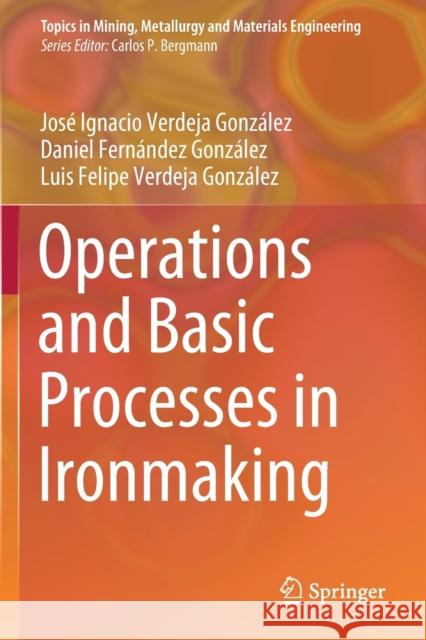Operations and Basic Processes in Ironmaking » książka



Operations and Basic Processes in Ironmaking
ISBN-13: 9783030546083 / Angielski / Miękka / 2021 / 318 str.
Operations and Basic Processes in Ironmaking
ISBN-13: 9783030546083 / Angielski / Miękka / 2021 / 318 str.
(netto: 183,56 VAT: 5%)
Najniższa cena z 30 dni: 191,40 zł
ok. 20 dni roboczych.
Darmowa dostawa!
José Ignacio Verdeja González received his Bachelor of Engineering from the School of Mines (Polytechnic University of Madrid, Spain) in 1968, and his Master of Science degrees in Metallurgy and Physics of the Solid State from the University of Paris in 1971/72. He holds Ph.D. degrees from the University of Oviedo (1974) and the University of Paris (1978). He was appointed as Assistant Professor (1978) and Professor of Physical Metallurgy (1983) at the Oviedo School of Mines (Oviedo, Asturias, Spain). He became the first Head of the Department of Materials Science and Metallurgy at the University of Oviedo (1987–1991), and he worked closely with Professor José Antonio Pero-Sanz Elorz throughout his professional career (1974–2012). He is author or co-author of more than 120 papers on solidification and processes, metallography–metallographic properties relationships, sheet forming, thixoforming, superplasticity and textures of metals and alloys. Since 1976, he has been a member of ASM International. His current activities focus on broadening and strengthening the academic programs at the Department of Materials Science and Metallurgical Engineering at the University of Oviedo.
Daniel Fernández González received his Bachelor of Engineering and Master’s in Mining Engineering (Oviedo School of Mines, University of Oviedo, Spain) in 2013 and his Master’s in Materials Science and Technology from the same university in 2014. He obtained his Ph.D. from the University of Oviedo (granted by the Spanish Government) in 2019 with a dissertation on the utilization of concentrated solar energy in metallurgy and materials. He was awarded a prize for the best end of degree project in the environmental field gas natural fenosa. He is the author of more than 20 articles in indexed journals, and he has published the books: Materiales para Ingeniería. Fundiciones Férreas (Pedeca Press Publicaciones S. L. U., Madrid, 2018), Physical Metallurgy of Cast Irons (Springer International Publishing, Cham (Switzerland), 2018) and Structural Materials: Properties and Selection (Springer International Publishing, Cham (Switzerland), 2019). He has participated in several research projects in cooperation with industrial companies.
Luis Felipe Verdeja González holds a Ph.D. in Chemical Sciences from the University of Oviedo, where he is a Professor of Materials Science and Head of the Siderurgy, Metals and Materials Group (Sid-Met-Mat) and Head of the Department of Materials Science and Metallurgical Engineering at the University of Oviedo. His research focuses on the application, maintenance, and wear of refractory linings in blast furnaces and other metal and steel production processes. He has published over 100 articles and 9 books, and has participated in more than 40 research projects (public and private).
This textbook explores the production of pig iron, covering the first part of the steel production process, known as ironmaking. Divided into seven chapters, it discusses the following topics: raw materials for steel production (coking coal, iron ore, slag-forming agents and fluxes, scrap, ferroalloys and pre-reduced materials), the sintering process (used to prepare the burden for the blast furnace), the pelletizing process (used to agglomerate the fine iron ores), the production of coke (the main reductant in the ironmaking process), the production of iron by reduction with gas (an alternative to the blast furnace) and the production of pig iron in the blast furnace (which is used in more than 65% of steel production worldwide).
Specially conceived for graduate and undergraduate courses, this book is based on more than 30 years of teaching experience in courses for undergraduates, graduates (master and Ph.D.) and industry professionals (technicians). It explores the recent trends in the iron- and steelmaking process (which might used in the future production of steel), and features 55 worked exercises and real-world problems to complement of the theoretical sections of the text.1997-2025 DolnySlask.com Agencja Internetowa
KrainaKsiazek.PL - Księgarnia Internetowa









